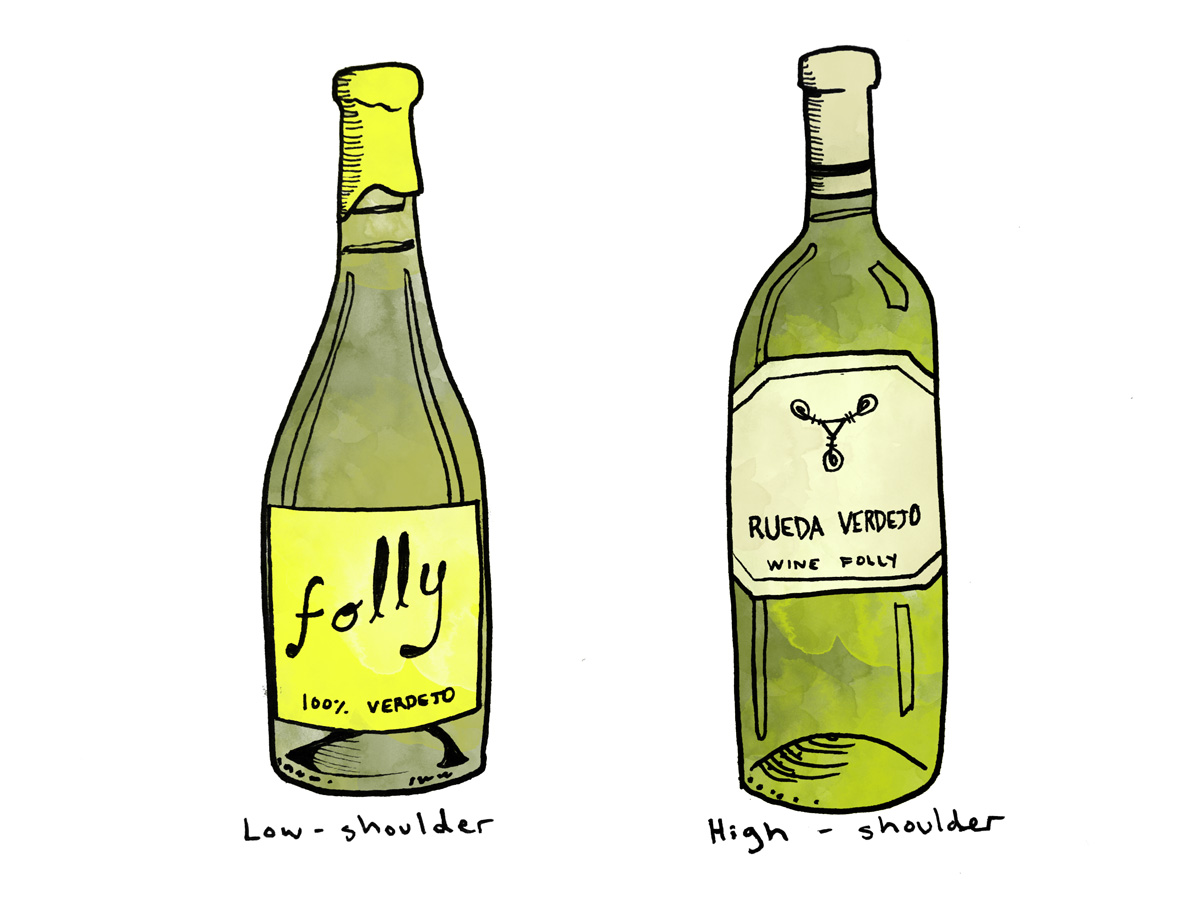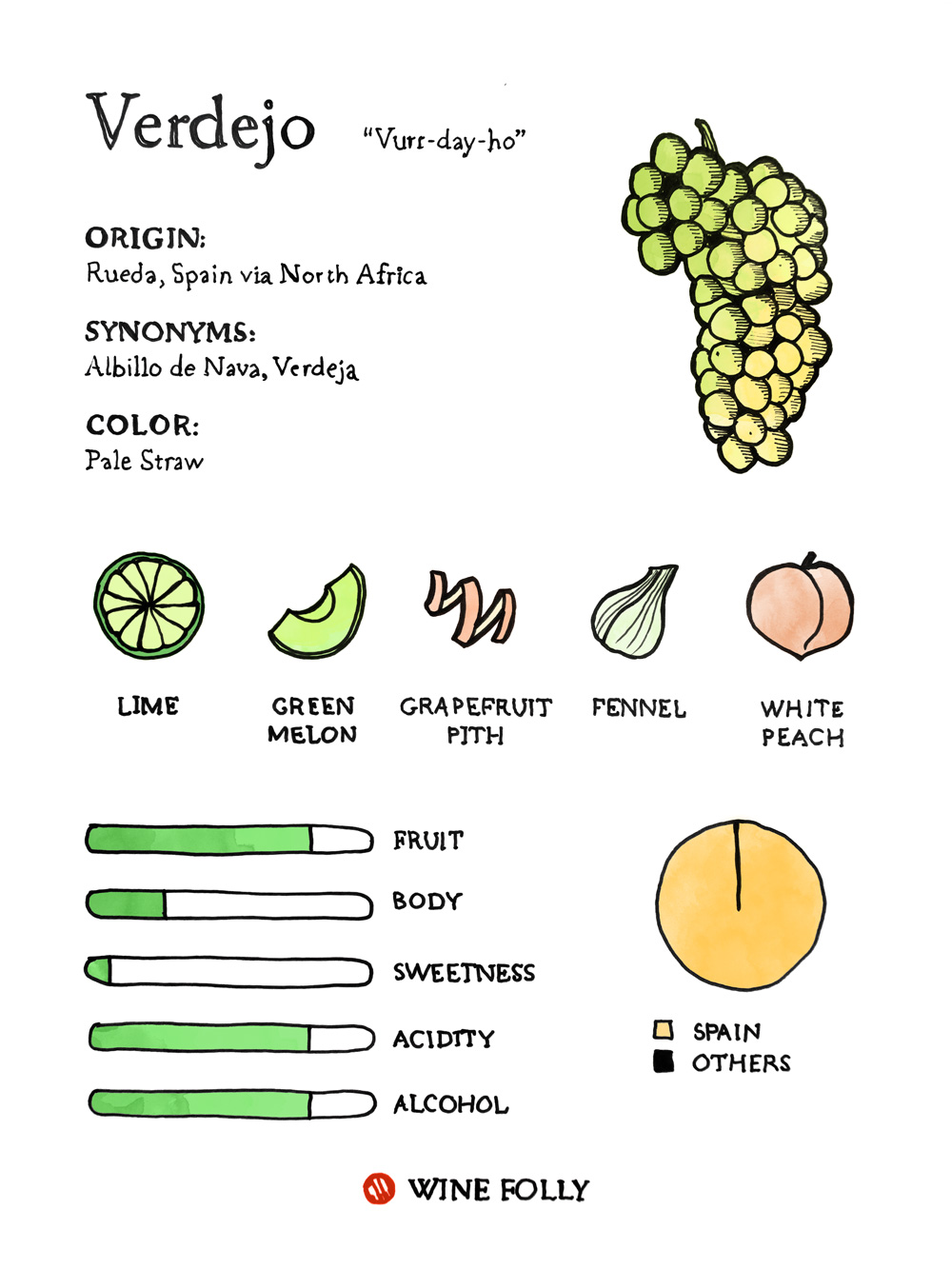If you’re a fan of crisp, fresh, aromatic, fruity white wines with clean herbaceous notes, you’ll want to reach for a Verdejo. The grape is predominantly grown in Rueda, Spain, where careful harvesting and vinification techniques are instrumental to maintaining its crisp, lively style, as the grape is prone to easy oxidation. Very similar in style and flavor to Sauvignon Blanc and Pinot Gris, Verdejo makes both a refreshing aperitif and good food pairing wine.
Verdejo wines can be made into two distinctive styles. Most often, you’ll encounter Verdejo as a ready to drink, light and crisp wine with herbaceous notes and fresh fruit flavors. However, when Verdejo sees more oxygen during fermentation (usually during oak-aging), the resultant wine becomes much more full-bodied and somewhat nutty, with additional notes of almond and honey.

Low-shouldered bottles typically indicate a wine with some form of oxidative winemaking, where as high-shouldered bottles indicate a leaner, fruity style.
Try a fresh, lively Rueda Verdejo
When labeled Rueda Verdejo, the wine will contain at least 85% Verdejo (though most often are 100%), as opposed to Rueda white blends, which must have at least 50% Verdejo with the remaining usually Sauvignon Blanc and/or Viura (aka Macabeo).
Create Your Own Comparative Wine Tasting
We created a set of tasting mats that will help you assess wine and create your own wine tastings. The set includes mats for up to 80 wines, instructions on how to create a tasting, as well as a wine aroma wheel.

